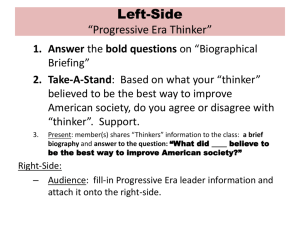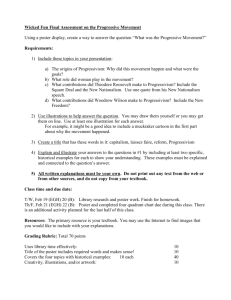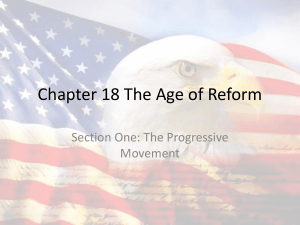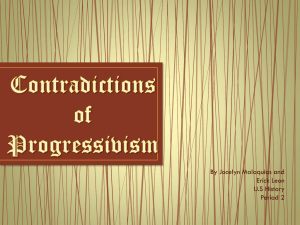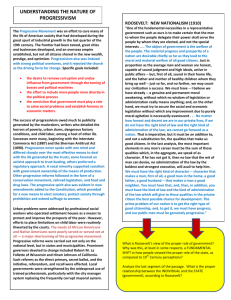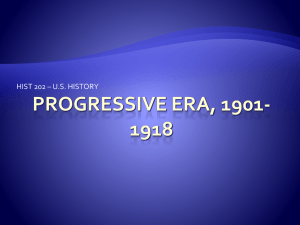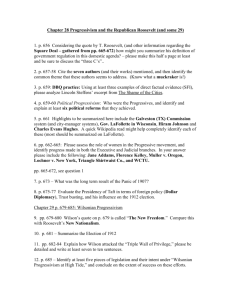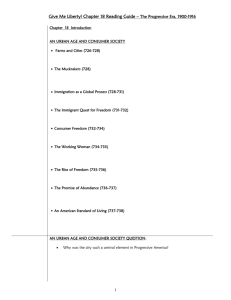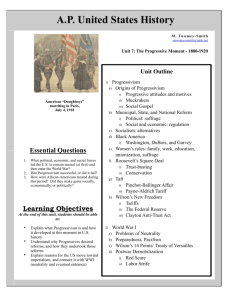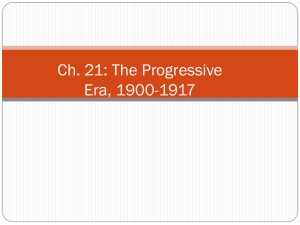THE PROGRESSIVE ERA 1900–1920
advertisement
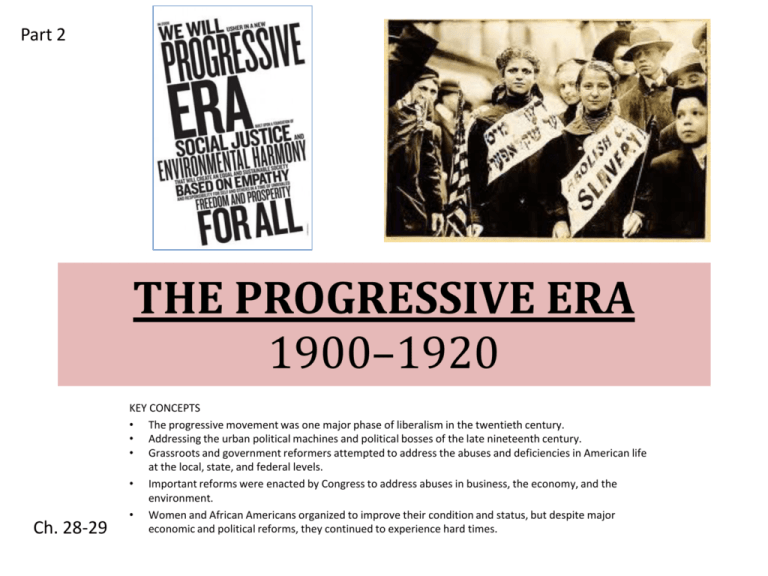
Part 2 THE PROGRESSIVE ERA 1900–1920 Ch. 28-29 KEY CONCEPTS • The progressive movement was one major phase of liberalism in the twentieth century. • Addressing the urban political machines and political bosses of the late nineteenth century. • Grassroots and government reformers attempted to address the abuses and deficiencies in American life at the local, state, and federal levels. • Important reforms were enacted by Congress to address abuses in business, the economy, and the environment. • Women and African Americans organized to improve their condition and status, but despite major economic and political reforms, they continued to experience hard times. The Socialist Challenge • The Socialists Party of the United States (1901) – Eugene Debs and V.L. Berger – Policies and programs – Progressives and Socialists cooperate – Socialist ideas take hold • IWW “Wobblies” (1905) – radical Black Americans and the Progressive Movement • African-Americans leaders emerge – Booker T. Washington • Argued • Tuskegee Institute • advocated – W.E.B. Du Bois • Views • The Souls of Black Folk (1903) • “talented tenth” • NAACP – Marcus Garvey • UNIA • “back-to-Africa” – Black Star Line Left-Side “Progressive Parts” 1. Using Ch. 28, break down the various component parts among progressive reforms. 2. Divide your paper into 4 parts: Political Progressivism, Economic/Industrial Progressivism, Consumer Progressivism, and Environmental Progressivism. 3. Put each of the following progressive acts, policies, or court cases into one of the those categories and provide purpose for each reform. a) b) c) d) e) f) The Newlands Act of 1902 The movement for women’s suffrage Direct election of senators The Meat Inspection Act of 1906 The Hepburn Act of 1906 Yosemite and Grand Canyon National Parks g) h) i) j) k) l) The ten-hour law for bakers The anthracite coal strike of 1902 Initiative, referendum, and recall Muller v. Oregon The Pure Food and Drug Act Workmen’s Compensation laws Left-Side “Progressive Parts” Political Progressivism Economic/Industrial Progressivism • identify reform and state purpose Consumer Progressivism a) b) c) d) e) f) The Newlands Act of 1902 The movement for women’s suffrage Direct election of senators The Meat Inspection Act of 1906 The Hepburn Act of 1906 Yosemite and Grand Canyon National Parks Environmental Progressivism g) h) i) j) k) l) The ten-hour law for bakers The Anthracite coal strike of 1902 Initiative, referendum, and recall Muller v. Oregon The Pure Food and Drug Act Workmen’s Compensation laws
